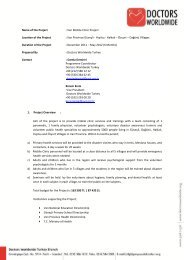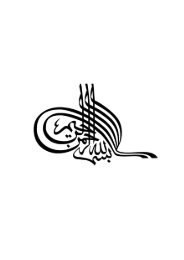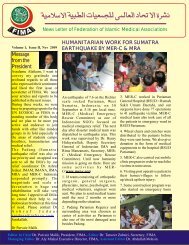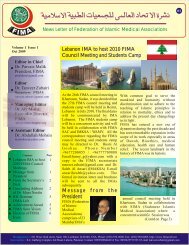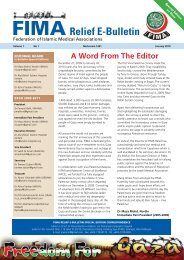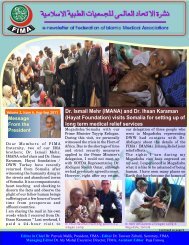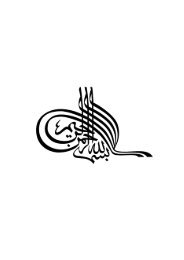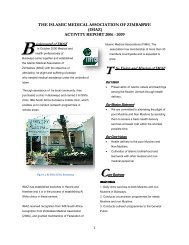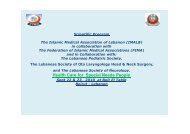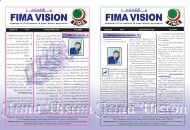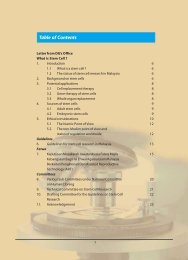FIMA Year Book 2009 - Federation of Islamic Medical Associations
FIMA Year Book 2009 - Federation of Islamic Medical Associations
FIMA Year Book 2009 - Federation of Islamic Medical Associations
You also want an ePaper? Increase the reach of your titles
YUMPU automatically turns print PDFs into web optimized ePapers that Google loves.
Quality Assurancecurricula that must reflect a statedunderlying vision and mission <strong>of</strong> thefaculty is required. All basic domains<strong>of</strong> education including knowledge,skills, and attitudes should beadequately covered in these medicalcurricula with full integration bothvertically and horizontally. Theyshould be benchmarked against thebest faculties <strong>of</strong> medicine in the regionand internationally. They should alsobe accredited by the national medicallicensing and regulatory authorityto make sure that graduates will beregistrable and employable in the localhospitals. Quality in medical educationalso implies the recognition <strong>of</strong> thefinal qualification by other universitiesespecially overseas. However, denial<strong>of</strong> recognition does not alwaysindicate poor quality because politicalfactors might be responsible for suchrejections.The exponential growth in medicalknowledge and continuous research inmedical education requires continuousrevision <strong>of</strong> the teaching strategiesand curricula. These reviews shouldresult in refining, redirecting, andrestructuring the curriculum. Theprocess <strong>of</strong> curriculum review shouldbe evolutionary and not revolutionary.Abrupt changes and redoing everything might raise serious issues inthe learning and educational process.Therefore such actions should begradual and well consulted (19) .All learning resources must be adequate,fully supported by the requiredliterature and audio visual aids. Qualitystarts from the facilities, infrastructureand management. If those are done wellonly visionary and qualified teachersare needed to ensure quality products.Library books, digital libraries, learningresource centers and internet access areessential prerequisites for achievingquality education (11) .The evaluation system <strong>of</strong> studentsreflects its quality management andcontrol. Commencing from theenrollment <strong>of</strong> the students duringthe course and exit assessments, bothsummative and continuous, reflect thepreparation <strong>of</strong> the students and quality<strong>of</strong> the end product. A systematicassessment scheduled accordingly andwell designed standing procedures <strong>of</strong>assessments and exams are essential tomaintain quality <strong>of</strong> medical education.All faculty members must havewritten policies and guidelines forexaminations and assessment process.Baseline criteria for assessment <strong>of</strong>students including all three essentialdomains <strong>of</strong> learning: (cognitive,effective and psychomotor domains),passing score as well as transparency inthe assessment system are hallmarks <strong>of</strong>quality assessment.Internal and external examiners areappointed to achieve the requiredstandard <strong>of</strong> evaluation. To maintainquality, medical educators faculty fromother institutions should be involved asexternal examiners. Their involvementshould include comments on theexamination system; questions as well<strong>FIMA</strong> <strong>Year</strong><strong>Book</strong> <strong>2009</strong>163




